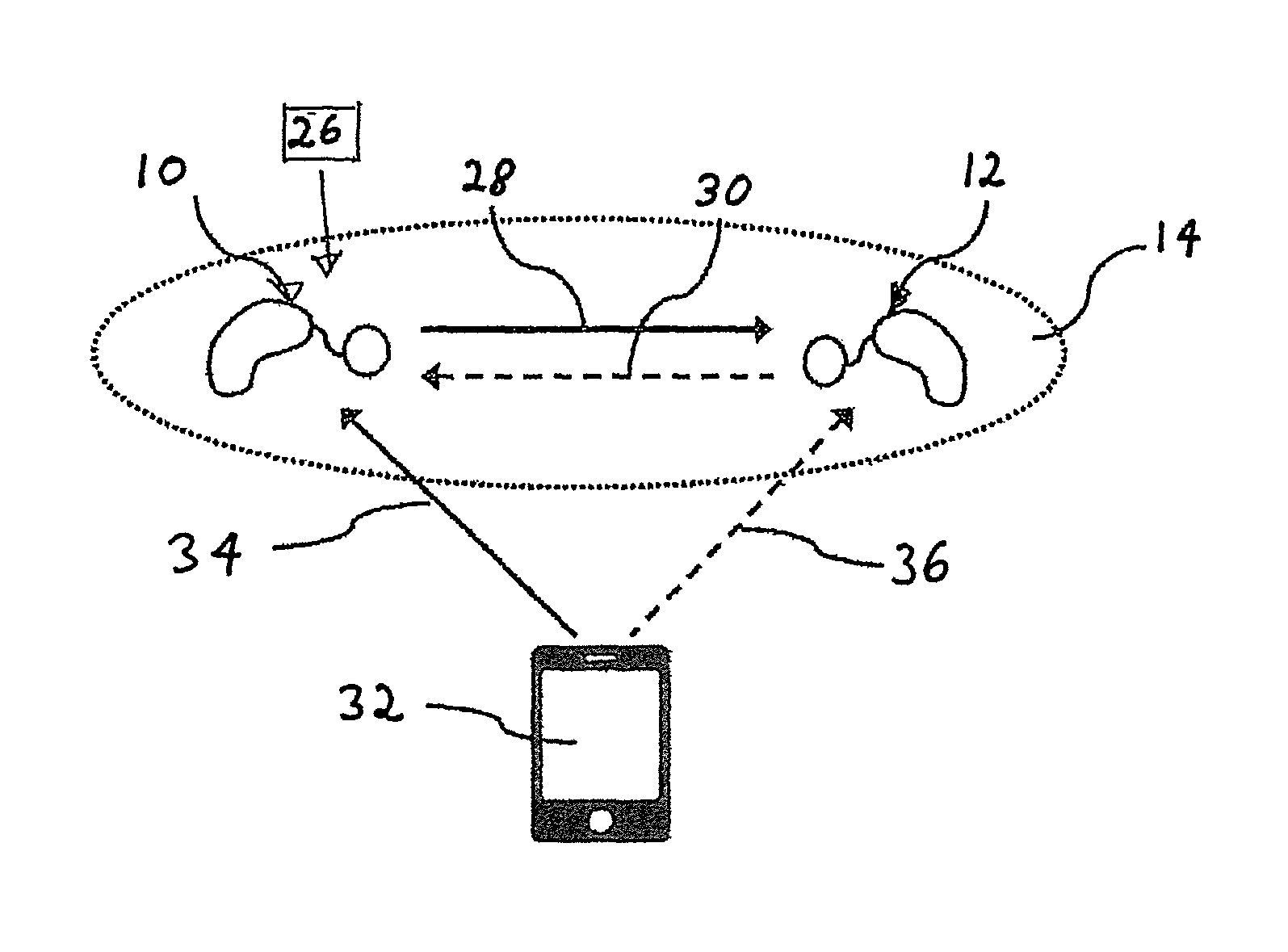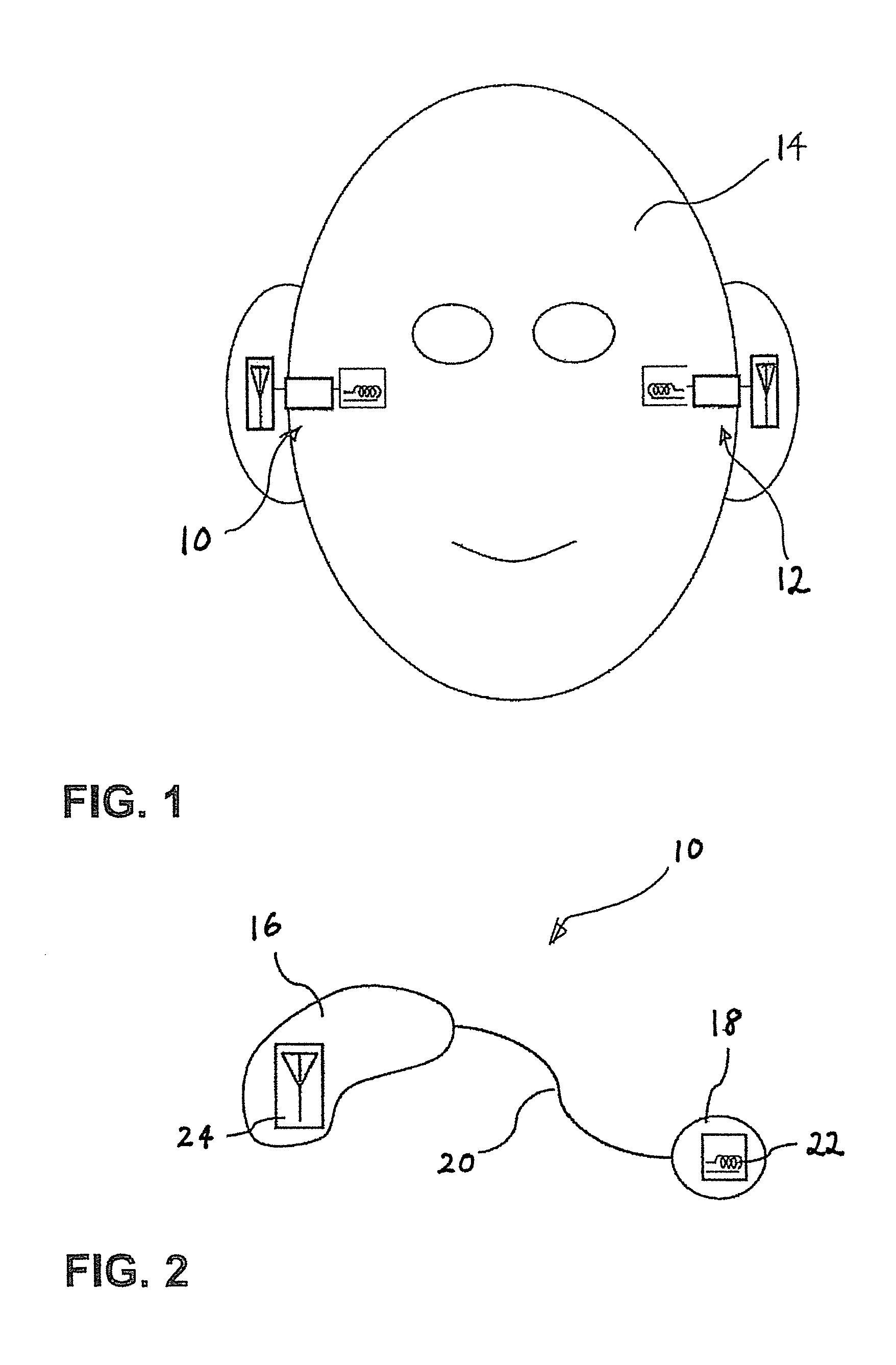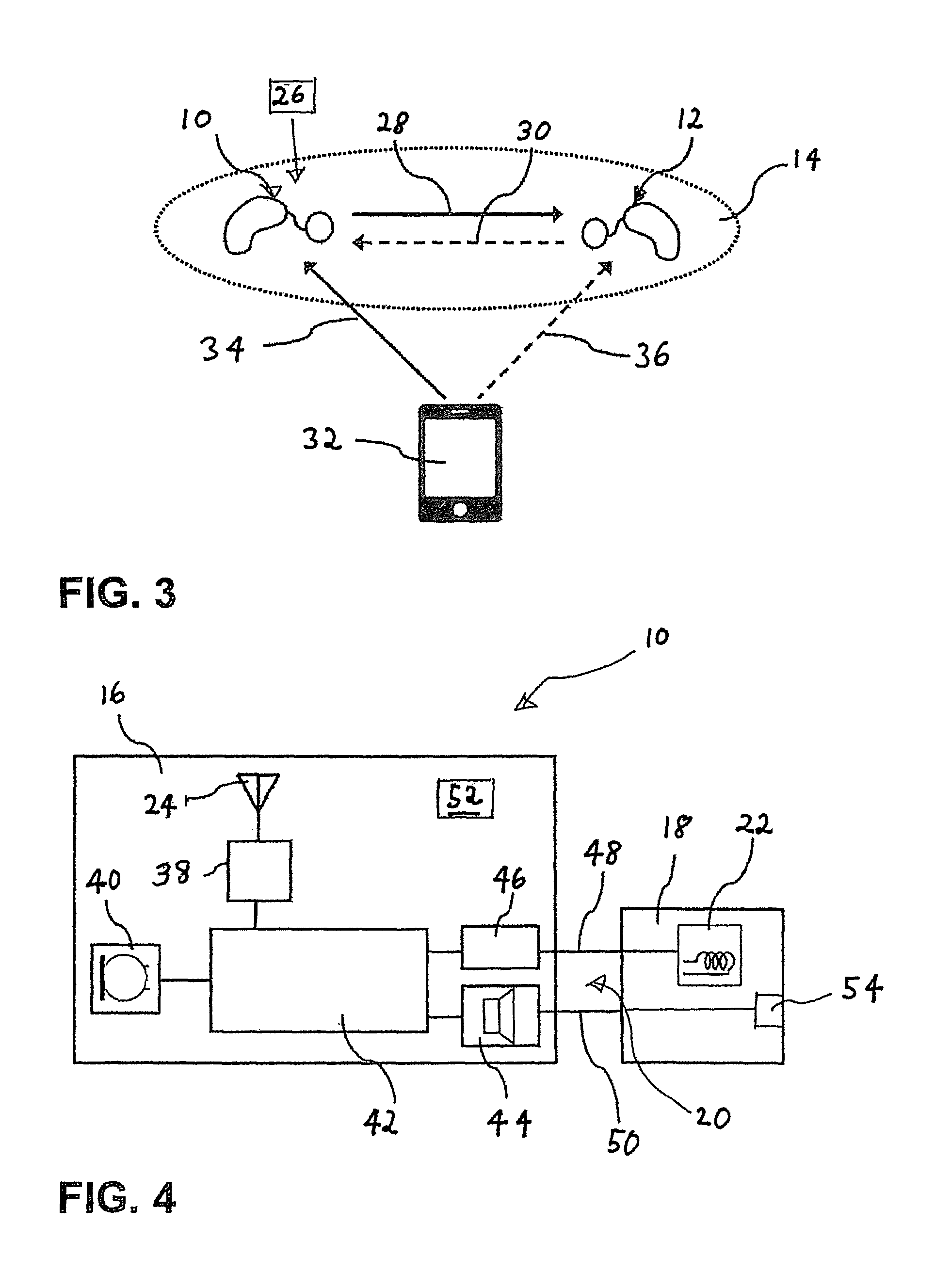Hearing instrument comprising two antennas
a technology of antennas and hearing devices, applied in the field of hearing instruments, can solve the problems of relatively high power consumption of bluetooth links between two hearing devices, difficulty in meeting power consumption or electromagnetic emissions requirements, and limited physical dimensions of hearing instruments, so as to reduce the number of bluetooth links, maintain or optimize the quality and power efficiency of the respective wireless link to the respective external device, and reduce the effect of electromagnetic interaction
- Summary
- Abstract
- Description
- Claims
- Application Information
AI Technical Summary
Benefits of technology
Problems solved by technology
Method used
Image
Examples
Embodiment Construction
[0023]A hearing instrument of the present invention comprises a first part to be located at least in part in the ear canal and comprising a first antenna to be located substantially within the ear canal and a second part to be worn outside the ear canal at the concha and comprising a second antenna to be located outside the ear canal; typically, the first part is designed as an ITE part and the second part is designed as a BTE part. However, the second part also may be positioned in front of the concha or be attached at the concha.
[0024]FIG. 1 is a schematic illustration of an example of a binaural system comprising a first hearing instrument 10 and a second hearing instrument 12, each one at one ear of a user's head 14.
[0025]According to FIG. 2, the hearing instrument 10 comprises a BTE part 16 and an ITE part 18, which are connected via a connection 20 which provides for an electrical wire connection and also may comprise, in case that the ITE part does not comprise a loudspeaker,...
PUM
 Login to View More
Login to View More Abstract
Description
Claims
Application Information
 Login to View More
Login to View More - R&D
- Intellectual Property
- Life Sciences
- Materials
- Tech Scout
- Unparalleled Data Quality
- Higher Quality Content
- 60% Fewer Hallucinations
Browse by: Latest US Patents, China's latest patents, Technical Efficacy Thesaurus, Application Domain, Technology Topic, Popular Technical Reports.
© 2025 PatSnap. All rights reserved.Legal|Privacy policy|Modern Slavery Act Transparency Statement|Sitemap|About US| Contact US: help@patsnap.com



